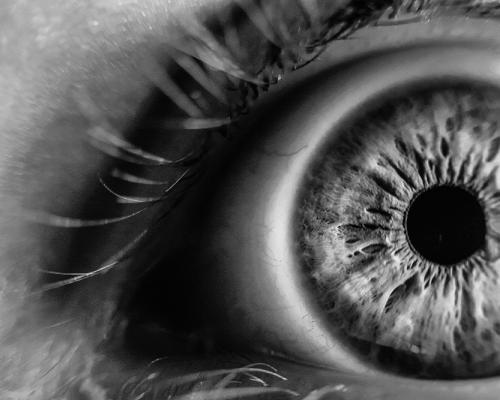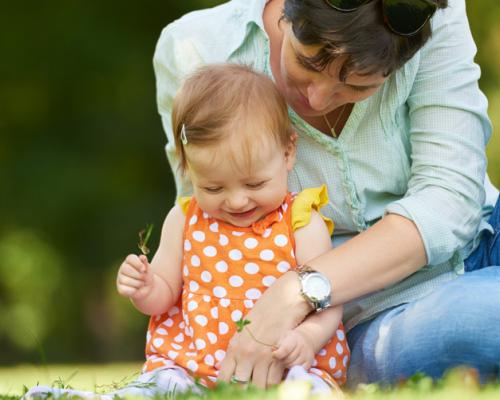Helping a child in pain
Pain expert Leora Kuttner shares up-to-date understandings about children’s experience of pain and some ways to help them reduce it.
Pain is now regarded not merely as a symptom of a disease but as a human rights issue.1 The relief of pain, therefore, demands the highest priority. By definition, pain is a noxious sensation, which always has an emotional impact; it is as important as any disease or illness, deserving clinical attention and treatment. Fortunately today, many breakthroughs in scientific research have increased our understanding and treatment of childhood pain. My goal is to make this information easily accessible to those working directly with children. Instead of minimising, misunderstanding or dismissing a child’s pain, a professional can provide prompt pain relief and empower the child to cope.
The belief that children don’t experience pain pervaded medical and nursing teaching and practice until the 1980s. If children expressed pain, it was ignored or underestimated and undertreated. “It’s not really that bad. It can’t be hurting that much!” These attitudes harmed children in pain. There are a number of myths about children and pain that scientific evidence has now proven wrong.
Myth 1: Newborn infants don’t have the mature nervous system needed to experience pain
Until the 1980s, newborn babies were considered physiologically incapable of processing pain and insensitive to pain.2 The rationale at that time was that pain medication for painful invasive procedures was unnecessary, owing to newborns’ physiological immaturity and, specifically, their lack of nerve myelination (the protein sheath that surrounds the nerves, enabling the nerve impulse to rapidly travel).
What we now know
It is true that newborns do not experience pain in the same way as an older child, since their nervous systems are still developing. However, research with newborns, and particularly premature newborns, indicates that, from 26 weeks of gestation or earlier, these infants have developed the central nervous systems necessary to feel pain.3 The belief that the nerve fibres necessary to transmit pain messages lack myelination, thereby reducing the newborn’s pain experience, is now known to be invalid. Pain is transmitted over poorly myelinated and unmyelinated fibres, even in adults. Although pain messages are conducted more slowly in newborn babies, these messages have a shorter distance to travel. Moreover, because the nervous systems of newborns are developing, they do not have the ability to modulate the transmission of pain signals and exert control from the brain to the spinal cord. Pain signals therefore persist in the infants’ systems, and painful procedures produce a much stronger physiological response in an infant than in an adolescent or adult.
Myth 2: Children do not feel as much pain as adults do
Children’s pain is often underestimated in places where painful procedures most frequently occur, such as in blood-collection laboratories. “Oh, this won’t hurt!” says the person giving, not getting, the needle. Insensitive remarks like these – “You don’t have to be scared”, “Oh, let’s be brave”, “Don’t cry; be a big boy!”, “It’ll be over in a minute” – reveal a lack of empathy for the child and/or appreciation that the child’s fear of pain will amplify the pain experience. Furthermore, if you’re five years old, isn’t a minute of pain something to object to? A minute is an eternity for most children, particularly if the experience is sharp pain and the needle breaks your skin. Children have their own ideas about procedures, and we only discover them by asking. For example, six-year-old Marcos was upset about having blood drawn. When his mother asked him what was especially upsetting him, he answered, “When they take my blood, will they give it back to me?”
What we now know
Children feel as much pain as adults do and perhaps even more. Infants, toddlers, children and teens are at risk of developing anticipatory fears of painful procedures. When health professionals understand the multi-factorial nature of pain and have compassion, they can help young children prepare for the procedure with remarks such as, “Do you know how to help yourself during this procedure? … Let me show you how to blow away your scary feelings in these bubbles. [Child and professional blow together.] See – that blows it out of your body and so you’re not bothered by the procedure. That’s it! You can help yourself! You have got an important job to do to help your body feel better!”
Myth 3: Children will get used to pain
Children’s pain is often undertreated. Some children in pain will become very quiet and withdrawn, not playing as they used to. Often they may feel exhausted by the pain, unable to articulate its degree or intensity, so they suffer in silence or become restless or agitated. It’s incumbent upon us as healthcare professionals to inquire and assess whether pain may be a factor in a child’s change in behaviour.
What we now know
With good care, children with chronic or recurrent diseases or syndromes do learn about the nature of their pain. Over time they become sophisticated in their diagnostic ability to determine what the pain may indicate but they don’t ‘get used to it’, accept it as normal, like it or dismiss it. Pain is a fact of their lives, and they have to deal with it and manage it, otherwise it disrupts their attempts to live a normal life.
Experiencing pain over time drains and debilitates children as well as adults. Prolonged pain also causes changes in the nervous system, along with increased sensitivity and irritability. As pain persists, achieving relief becomes more difficult. Nor do children get used to acute or recurrent pain, such as recurring migraines, Crohn’s disease, flares of juvenile idiopathic arthritis or frequent blood-draws.
Children do not become used to needles with increased frequency of injections. In fact, the opposite is the case. Children build up greater fears and quickly learn to resist subsequent procedures unless a therapeutic plan to prevent this fear has been developed. Anticipating a needle can disrupt a child’s sleep, destroy the child’s appetite and make an otherwise normal child preoccupied, anxious and clingy.4,5
Never underestimate the fear of pain. For children, the fear of a painful procedure can be worse than a disease itself.6 Children will go to great lengths to avoid pain. Sensitive nurses can identify children who are in pain because they’re not playing or moving about in their usual way. When asked if they’re in pain, some children have denied their pain because they suspect they’ll be given a needle to make the pain go away. A child who has had a bad experience with injections and has developed a fear of needles may show great ingenuity and desperation in bartering and negotiating to get out of an injection. In extremes, a child has even hidden away on the ward or physically battled with medical staff to avoid the upcoming ‘shot’ (replacing the word ‘shot’ with the more apt term ‘injection’ removes the notion of wounding). These extreme situations result from not empowering the child with better ways of coping.
Myth 4: Children cannot reliably explain their pain
All children feel their pain but, while some children are spontaneously able to explain their pain, others need help to do so. This process can be difficult, especially with a stoic child. With careful coaching and good assessment skills, the vast majority of children should be able to talk about their pain; once this dialogue is established, children will engage and provide reliable reports. Exceptions to this are children who are developmentally delayed, where parents’ or caregivers’ observations are paramount and where clinicians need to be attuned to gauge whether the child is in pain. The myth that children are not reliable in their pain assessment comes from not working closely with children of all ages and knowing their capacities.
What we now know
Clinically, we know that children as young as 12–15 months can let you know very clearly if it hurts or not. Even very young children are capable of expressing, in their own words, what they are experiencing or what is occurring. Children are capable of reliably reporting about their pain and disease. If children are asked with non-leading questions where they hurt and how much they hurt, young children (even at 20 months) will answer by pointing to the site of their pain. With experience, even young children can become reliable interpreters of their pain signals. For example, six-year-old Jeffrey was chasing his older sister around the house and he slammed into the side of the dining-room table. His father winced, “Oh boy, that must have been a big hurt!” With a look that implied, “Well, really, Dad, you should know better,” Jeffrey replied, “Dad, that wasn’t a hurt; that was a whack!” “What’s the difference?” asked his puzzled father. “Well, don’t you know that a whack isn’t serious? It’s like a bump,” said Jeffrey, with authority. “But a hurt is serious, like when you cut your leg and you bleed.”
Myth 5: If a child complains of pain but does not appear to be in pain, the child does not need pain relief
Some children who report ongoing pain still wish to play, either by themselves or with others. Playing is the normal ‘work’ of childhood. Central to this myth is the notion of disability that assumes that when one is in pain one should not be able to function adequately. This is far from the truth. Pain does not equal disability. Allie, a 10-year old patient with juvenile rheumatoid arthritis, had set her heart on joining her brothers and sister water-skiing during their summer holiday. Even though she reported experiencing significant pain in her right wrist and ankle, she chose to go ahead and water-ski. If someone had based a decision on the evidence of her water-skiing, her pain would have been inadequately treated.
You only know if you ask the child directly. These children’s desire to maintain involvement in their normal daily life, doing the things that give them meaning and pleasure, despite the pain, is a sign of their psychological resilience and health. This myth persists if pain is regarded as an objective measurable phenomenon, which it is not.
What we now know
Pain is a subjective, private and highly personal experience. It is therefore difficult to assess the presence or absence of another’s pain merely by looking. Some children will openly exhibit their pain; some will hint at it and others will cope by acting as if the pain were not there. If a child says he or she is in pain, the child’s pain needs to be attended to and, in the process, better assessed.
Myth 6: If a child can be distracted, the child is not in pain
Some nursing or medical professionals have used the method of distracting children from their pain as a diagnostic tool. If the child can be distracted, the myth goes, the pain isn’t real. This is based on the assumption that, if a child is able to be successfully distracted by a conversation or question, so that the child no longer winces, cries or complains, this indicates that the child’s pain isn’t that severe.
What we now know
Distraction does not exclude the existence of pain and it cannot be used in that manner as a diagnostic tool. Distracting a child from pain – that is, shifting the child’s attention away from the pain – does not indicate that pain is no longer being experienced. It merely indicates that the child is capable at that moment of using cognitive capacities to move his or her focus away from the pain and so minimise the perception of it at that moment – a useful coping method. It could also indicate that, for the moment that the child chose to focus on something more engaging, like play or an electronic game, the pain was not all consuming. The gold standard, when assessment is needed, is to ask the child if the hurt is still there.
Myth 7: Opioid analgesics are dangerous for children and cause addiction
Until recently, a child in pain post-surgery did not routinely get adequate analgesia. The undertreatment by professionals of children in pain was first exposed in a study in Iowa in 1974, and it took some time for this finding to have the full impact on surgical practice.7 Dr Joanne Eland compared the medical charts of 25 children with those of 18 adults, who had undergone similar surgeries. She found a startling and significant undertreatment of the children’s pain and a wide discrepancy in medication given to children, compared with that given to adults. The common finding by other researchers in the 1980s was that, because of an ill-founded fear of addiction to opioids and the effects of opioids, medical and nursing staff gave young children and infants significantly less opioid medication than adults for similar pain conditions.
What we now know
This fear of using strong pain medications has had a long history and still persists in some countries. It has hindered the provision of adequate pain relief all over the world. Even in countries where morphine is readily available, there has been the misplaced concern that giving a child morphine will cause respiratory distress. We know that this will not occur when opioids are appropriately administered and monitored carefully.
It is important to dispel immediately the concern about opioid addiction. When a child is in severe pain, the use of opioids will not create an addiction. Unlike people who become addicts when they take drugs for recreation or pleasure, children (or adults) in pain do not become addicted when they take strong analgesics for pain relief.
Over time, the child may become more tolerant of the medication and higher levels may be required to relieve pain. This is a physiological dependence, not drug addiction, which is a psychological and physiological dependency. Unlike substance abusers, children on opioids for pain relief are not psychologically dependent on their medication. They use the medication until their pain no longer interferes with their lives. Treatment of a physiological dependence requires a gradual reduction in the medication to control withdrawal symptoms. Using available pain-reduction methods and medications with a child before or during a pain episode encourages the child’s active participation in reducing the pain and fear and thus prevents feelings of victimisation. Children will learn to become ‘boss’ of their own bodies, even when they are in pain.

This is an abridged extract from A Child in Pain: What Health Professionals Can Do to Help by Leora Kuttner PhD (© Leora Kuttner 2010 ISBN 9781845904364).
The sections on 'effective responses to a child in pain' and 'language that helps make the pain go away' are not complete but focus on information likely to be of most relevance, interest or use as a 'refresher' for readers of this journal who are already familiar with some of the techniques offered.
Some effective responses to a child in pain
Respond promptly to children’s pain in a caring, professional and practical manner and direct their attention to the sensations that will be soothing, so that they are orienting themselves toward more comfortable sensory output.
To a child who has sustained a laceration, you might say, “That’s a painful cut. We must first cool it and clean it up. The coolness of the water will soothe it. Feel the cool and focus on it, because that helps your body find comfort.”
To a child who is complaining of a headache, you could say, “Ah, you have a headache. You know the build up of the pain will stop when you lie down. Lie down now and close your eyes. That’s it. Feel how that position helps the pain to start draining away. I’ll close the blinds to keep the light out and bring your medication. While I’m away, let the darkness soothe your eyes, and do some slow, easy belly breaths to bring more comfort back into your body.”
Tell the child what is happening in his or her body. For example, “You’ve had an accident. You’re shivering because your body has had a shock and is sore and hurting. It’s best not to move at all. Be so still, so that you feel your whole body settling. It’s good to be still as I carefully check your leg, so lie perfectly still. That’s good. I’m going to cover you with a blanket, because your body feels cold even though it’s hot outside. Feel how that helps. You’ll be okay now that you’re here. Focus your attention on feeling the warmth growing. You can squeeze Mum’s hand while we have a look.” The repetition of what you need the child to do, spoken in a comforting tone of voice while providing concise explanations, is likely to be immediately experienced as beneficial.
Acknowledge the pain; don’t minimise or deny it. Children feel discounted and disrespected when their pain is not acknowledged. If a child has stomach or bowel pain, you could say, “These stomach cramps are hurting you a lot. I can see that you are very uncomfortable. Is the pain hurting more or less than when it first started? How has it changed? What made it change? Tell me what it feels like – dull, throbbing, achy or shooting, stabbing pain? Show me now where it is hurting … and where it is not. Has this stopped you doing what you like to do?” This is the principle of joining with the patient, wherever the patient is.
Tell the child what positive steps are being taken to deal with the pain. Don’t lie to the child, withhold essential information, sugar-coat it or give false reassurance. Give accurate ageappropriate information sensitively so that the child and parents can make sense of what’s happening.
Provide hope, wherever possible. Children need to know that the pain will get better because of the steps being taken. “You know, of course, that now that you’re doing your physio programme regularly your body is going to heal. Young bodies know how to do that well!” Providing hope can spur a child on to face difficult procedures or trying times. It is more than a placebo; it is an active, sustaining energy. We don’t fully understand it but recognise that its absence is often problematic. Hope can be destroyed in a number of ways – by the words said, an attitude and any underlying sense of phoniness or cynicism, which children are quick to note. Use language that conveys your concern and genuine conviction. Remind children of their bodies’ natural potential for healing and relief from suffering. This helps children to let go of terror, doubt, fear and pain.
Keep yourself calm, as it will soothe the child’s anxiety. Check your own breathing. If it is shallow and rapid, breathe out and release the tension, allowing yourself to settle and regroup. I learned this important lesson when I worked with children with cancer during their painful procedures. When the procedure was not going well, the tension in the treatment room would spiral; everyone would tense and the atmosphere could be cut with a knife. We learned to cue each other with “Breathe!” Everyone exhaled and grinned, releasing our tension. From then on, the procedure would invariably go better. Before that, we would end up with a variety of symptoms, such as neck or back tension, feeling wrung out or a headache. The children naturally picked up our tension and inevitably did worse than if we had been relaxed and playful. I learned how crucial it is to help myself if I wish to help others.
Language that helps pain to go away
As you actively attend to a child’s language and behaviour, that focus is felt by the child. Your ‘tuning in’ is often mirrored by more accurate responses to the child’s messages. Your own language and tone also convey your attitude. What you say and how you say it reflect what you think, as well as what you believe, what you teach, what you expect and even, at times, what is likely to happen. Here are some useful pointers for using language therapeutically with a child in pain.8
Ask about the pain. A child is helped by hearing validation of his or her pain. “You are in a lot of pain right now and we are going to help you.” Then, when you ask a child to precisely describe the discomfort (“Can you tell me more about it?”), it helps the child to define the pain and, more importantly, conveys the notion that he or she is believed, that you are concerned and that you will endeavour to help. You can say, “The more I know about your pain, the more I can understand it and the better I can help. After all, it is your pain and you know it better than I do. Please help me understand where it is and where it stops.”
At first glance, this might seem like focusing too much on the pain but it serves an important function. It helps the child define and compartmentalise the discomfort; to know not only where it is but also where it is not. In this conversation, the triggers of the pain, what exacerbates it and what helps can be explored. Developing this ‘cognitive mastery’ is important for young children especially, so that they can begin to cope and gain some control over their discomfort. Listening to the child’s description allows you to understand more clearly what the child is experiencing, to learn how he or she is conceptualising the pain, what triggered it, what could be maintaining it. The child’s language also give you clues about what words and ideas could improve his or her mood, increase motivation and reduce suffering.
Remember the value of listening. As you ask questions, be sure to wait patiently and with positive expectation for the child’s (not the parent’s!) answer, which, when given, allows you to explore further and simultaneously to convey some shift in the child’s definition: for example, if a child says, “I’ve always got stomach pain”, you can add, “Until now! But let’s talk about how it can begin to change. What would be the first thing you’d notice when the pain starts to change?” Listen to how the child responds, not only to the words used.
Define the child’s pain by reframing it with hope, not doom. Children in pain quickly feel defeated. To counter this, you could say, for example, to a child with multiple lacerations, “You’re an energetic boy. I hear you like your skateboard! It looks as if you’ll need some stitches so that you heal well and continue to get even better on your skateboard.” Contrast with “These skateboards can be very dangerous. You’ll need stitches but I don’t think you’ll have scars.” Children listen carefully and watch closely. The first and most salient words, whether or not they are preceded by ‘not’, will be in their minds. What will the child remember? Dangerous, stitches, scars. Similarly, if you say, “Don’t be afraid – it won’t hurt much”, children hear afraid and hurt much. Use words that inspire courage and coping and sustain the hope that pain will ease. It is, after all, an electrical-chemical signal, open to modulation at many sites.
Reframe the child’s distress. For instance, when a child is startled and frightened by the sight of his or her own blood, reframe it by saying, “What beautiful blood you have! It’s a bright strong red. Look! I can tell it is healthy by its colour. Your blood is doing a good job of cleaning the wound out. Once it has done the job, the bleeding will stop, soon.”
Replace pain-loaded words with more tolerable words. The word ‘discomfort’ holds within it the possibility of comfort and there is even the possibility of emphasising the ‘comfort’ part rather than the ‘dis’ prefix. Another necessary shift, especially when talking to a child about previous or recurrent pain, is to refer to an ‘episode’ or ‘a time you had pain’, instead of an ‘attack’ of pain. ‘Episode’ is a neutral word that doesn’t suggest hurt. ‘Attack’ is a battle word that implies being at risk, a victim, and heightens feelings of vulnerability, helplessness and fear – clearly of no therapeutic value. Instead, you might say to the child, “Let’s use ‘episode’ or ‘event’ for each time you have discomfort or when you are ‘bothered’.” Most children will accept the invitation to throw out the negative word.
Note the parts of the body that are not in pain. If a child is preoccupied and over-focused on pain, and not open to coping, use language that shifts the child’s attention. Six-year-old Josh, paediatrician colleague Dan Kohen’s son, was on a picnic with a group of friends. Another boy about his age fell while running and banged his knee. As he sat screaming on the ground, holding his knee, Josh was the first one to reach him. As the adults approached moments later, they heard Josh asking his playmate, “How’s your other knee?” In a flash, his friend stopped crying, turned his attention to his other knee and said it was fine. Then they both got up again to play.
Shifting attention to where it is not hurting moves a child out of panic or shock. You can then delineate the limits of the pain. For example, if a child feels trapped by persistent pain: “I know your leg in traction is hurting with the pin in place but is it sore in your hip?” No? Good. How about in your back? No? Excellent. And in your ankle? No? I’m very pleased to hear this because it means that the pain is contained from the top of your leg to your calf but it isn’t in your hip, your back or your ankle. We’ll check this again, after you’ve had your medication in an hour, and see how much it has improved.”
Where possible, let the child know that what he or she is experiencing is normal and not life threatening nor the result of a terrible disease. Children have active imaginations and, unless correctly informed, may imagine the worst: “Your pain is strong because your arm is broken and bruised. The nerves in your arm are sending fast and strong messages to your brain so that you know not to move it. This is usual when a bone breaks. So, to bring comfort and better messages back into your body, we’re going to do the following...”
Remind the child that the pain will come to an end. Always truthfully provide the child with some idea of when the pain is likely to ease or go entirely. (Fit this into developmentally appropriate language for the child. For a pre-school child, you could say, “After one sleep, you’ll be able to get out of bed and the ‘hurt’ will be gone”.) Choose phrasing that conveys that pain will come to an end: “I’m wondering how quickly and easily you’ll notice the easing of your discomfort, because children’s bodies heal quickly.” Pain is rarely a steady consistent sensation and children’s bodies do repair and heal much more quickly than those of adults.
This article first appeared in "Human Givens Journal" Volume 17 - No. 4 (2010)
 Leora Kuttner PhD is a paediatric clinical psychologist, who specialises in children’s pain management. She is a clinical professor in the paediatric department of the University of British Columbia (BC) and BC Children’s Hospital, Vancouver, Canada. She has previously written a book for parents, entitled A Child in Pain: What Health Professionals Can Do to Help and has co-produced and directed awardwinning film documentaries on paediatric pain management.
Leora Kuttner PhD is a paediatric clinical psychologist, who specialises in children’s pain management. She is a clinical professor in the paediatric department of the University of British Columbia (BC) and BC Children’s Hospital, Vancouver, Canada. She has previously written a book for parents, entitled A Child in Pain: What Health Professionals Can Do to Help and has co-produced and directed awardwinning film documentaries on paediatric pain management.
 We need your help – this article originally appeared in the Human Givens Journal which takes no advertising at all, in order to maintain its editorial independence.
We need your help – this article originally appeared in the Human Givens Journal which takes no advertising at all, in order to maintain its editorial independence.
To survive it needs new readers and subscribers – if you have found the articles, case histories and interviews on this website helpful, and would like to support the human givens approach – please take out a subscription or buy a back issue today.
-
International Association for the Study of Pain (2004). Pain terms: a list with definitions and notes on usage. Pain, 6, 249–52.
-
Anand, K J and Hickey, P R (1987). Pain and its effects in the human neonate and fetus. New England Journal of Medicine, 317, 21, 1321–9.
-
Anand, K J and the International Evidence-Based Group for Neonatal Pain (2001). Consensus statement for the prevention and management of pain in the newborn. Archives of Pediatric & Adolescent Medicine, 155, 173–80.
-
Kennedy, R M, Luhmann, J, and Zempsky, W T (2008). Clinical implications of unmanaged needleinsertion pain and distress in children. Pediatrics, 122 (suppl 3), S130–3.
-
Walco, G A (2008). Pain and the pediatric primary practitioner. In G A Walco and K R Goldschneider (eds) Pain in Children: a practical guide for primary care. Humana Press, Totowa, NJ.
-
Zeltzer, L K and LeBaron, S (1982). Hypnosis and nonhypnotic techniques for reduction of pain and anxiety during painful procedures in children and adolescents with cancer. Journal of Pediatrics, 101, 1032–5.
-
Eland. J M (1974). Children’s communication of pain. Unpublished master’s thesis. University of Iowa, Iowa City.
-
Kuttner, L and Kohen, D P (1996). The language that helps pain go. In L Kuttner, A Child in Pain: how to help, what to do. Hartley & Marks, Vancouver.
Latest Tweets:
Tweets by humangivensLatest News:
HG practitioner participates in global congress
HG practitioner Felicity Jaffrey, who lives and works in Egypt, received the extraordinary honour of being invited to speak at Egypt’s hugely prestigious Global Congress on Population, Health and Human Development (PHDC24) in Cairo in October.
SCoPEd - latest update
The six SCoPEd partners have published their latest update on the important work currently underway with regards to the SCoPEd framework implementation, governance and impact assessment.
Date posted: 14/02/2024













